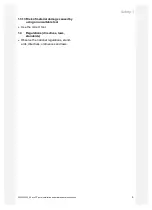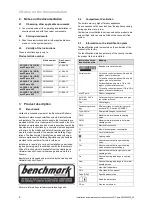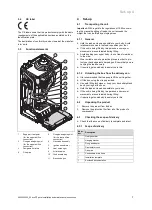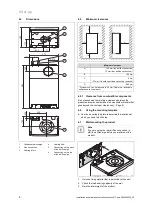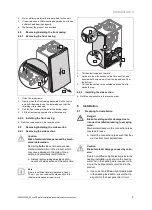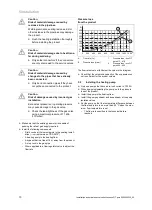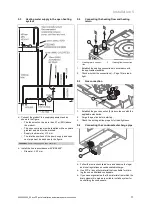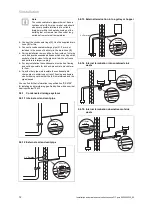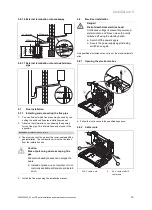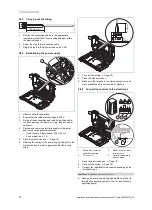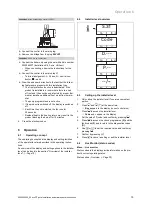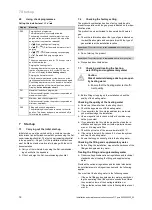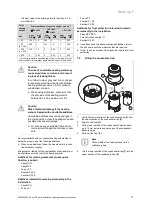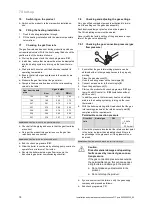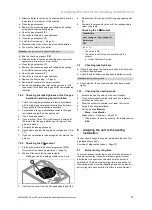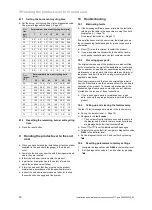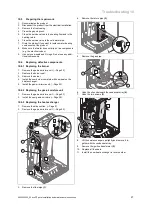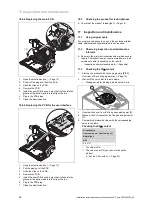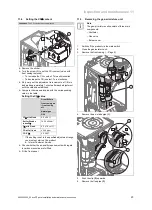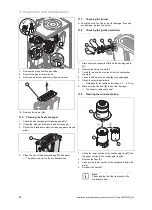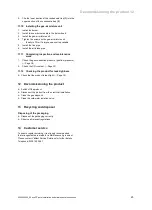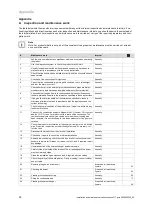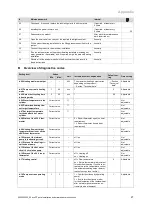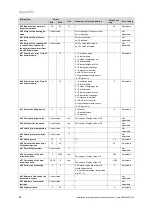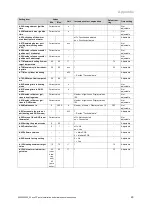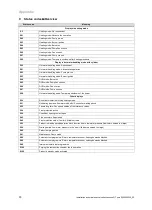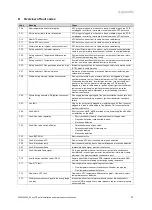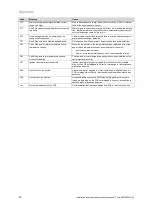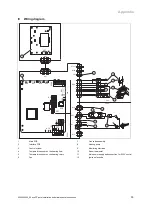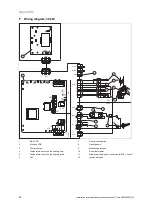
Adapting the unit to the heating installation 8
0020230535_05 ecoFIT pure Installation and maintenance instructions
19
▶
Allow the boiler to cool down by allowing pump overrun
to operate for a minimum of two minutes.
▶
Close the gas stopcock.
▶
Remove the pressure gauge and retighten the sealing
screw
(2)
for the measuring nipple.
▶
Open the gas stopcock
(1)
.
▶
Check the test nipple for gas tightness.
▶
Close the gas stopcock
(1)
.
▶
Install the front casing. (
→
Page 9)
▶
Disconnect the product from the electrical installation.
▶
You must not start up the boiler.
Conditions
: Gas flow pressure
in the
permissible range
▶
End the check programme
P.01
.
▶
Allow the boiler to cool down allowing pump overrun to
operate for a minimum of two minutes.
▶
Close the gas stopcock
(1)
.
▶
Remove the pressure gauge and retighten the sealing
screw
(2)
for the measuring nipple.
▶
Open the gas stopcock
(1)
.
▶
Check the test nipple for gas tightness.
▶
Remove the front casing. (
→
Page 9)
▶
Reset boiler controls for normal operation.
▶
Record the appliance gas inlet working pressure (kPa
resp. mbar) in the Benchmark gas boiler commissioning
checklist.
7.8.2
Checking the leak-tightness of the flue gas
installation and flue gas recirculation
1.
Check the flue gas installation is intact in accordance
with the latest gas safe technical bulletin and informa-
tion supplied in the installation instructions.
2.
For extended flue gas installations check for flue gas
recirculation using the air analysis point.
3.
Use a flue gas analyser.
4.
If you discover CO or CO
2
in the supply air, search for
the leak in the flue gas installation or for signs of flue
gas recirculation.
5.
Eliminate the damage properly.
6.
Check again whether the supply air contains any CO or
CO
2
.
7.
If you cannot eliminate the damage, do not start up the
product.
7.8.3
Checking the CO
₂
content
1.
Start up the product with check programme
(P.01)
.
Overview of the check programmes (
→
Page 16)
2.
Wait until the value that is read is stable.
–
Waiting period for reading a stable value: 5 min
1
3.
Unscrew the cover from the flue gas analysis point
(1)
.
4.
Measure the CO
₂
content at the flue gas analysis point
(1)
.
5.
Compare the measured value with the corresponding
value in the table.
Checking the CO
₂
content
Great Britain
front casing on / front casing off
Natural gas
G20
9.2
±
1 %
◁
The value is OK.
▽
The value is not OK; you cannot start up the
product.
▶
Inform Customer Service.
7.9
Checking leak-tightness
▶
Check the gas pipe, the heating circuit and the hot water
circuit for leak-tightness.
▶
Check that the air/flue pipe has been installed correctly.
Conditions
: Room-sealed operation
▶
Check whether the vacuum chamber has been closed
tightly.
7.10
Checking the heating mode
1.
Activate the heating mode on the user interface.
2.
Turn all thermostatic radiator valves on the radiators
until they are fully open.
3.
Allow the product to operate for at least 15 minutes.
4.
Purge the heating installation.
5.
Call up the
Live Monitor
.
–
Menu
→
Live Monitor
Status codes
–
Overview (
→
Page 30)
◁
If the product is working correctly, the display shows
S.04
.
8
Adapting the unit to the heating
installation
You can reset/change the system parameters (section "Us-
ing diagnostics codes").
Overview of diagnostics codes (
→
Page 27)
8.1
Burner anti-cycling time
To prevent frequent switching on and off of the burner and
thus prevent energy losses, an electronic restart lockout
is activated for a specific period each time the burner is
switched off. The burner anti-cycling time is only active for
the heating mode. Hot water handling mode during a burner
anti-cycling time does not affect the time function element.

